Places To Visit In Kathmandu: Explore the Capital City
Introduction
Nepal is a Himalayan country landlocked between India on one side and China on the other side. Nepal is the land of exploration and a one-of-a-kind experience, with old cultures that are rich and preserved set against some of the world's most stunning landscapes.
The Kathmandu Valley of Central Nepal is a bowl-shaped valley comprising three districts—Kathmandu, Lalitpur, and Bhaktapur. The capital city of Nepal, Kathmandu (KTM), is a popular tourist destination that is tucked away in the shadow of the majestic Himalayas. There are four significant mountains that encircle it: Chandragiri, Shivapuri, Phulchoki, and Nagarjuna. Kathmandu is where the Bagmati and Vishnumati rivers converge, at a height of roughly 1400 meters (4600 ft).
The largest city in the Himalayas, Kathmandu, is renowned for being a great site for those who wish to learn about history, art, and culture. It is the starting point for discovering Nepal's soul. Excellent trekking opportunities to the highest mountains in the world are available here, along with magnificent Indo-Tibetan and Newari handicrafts, heritage sites that have been designated by UNESCO, and hospitable locals that serve mouthwatering cuisine.

Sightseeings in Kathmandu
There are innumerable tourist attractions in Kathmandu that draw visitors in, some of the popular ones have been listed below:
1. Pashupatinath Temple in Nepal
The Pashupati Nath Temple in Kathmandu is said to be the oldest Hindu Temple in Nepal. As the name suggests, the temple is devoted to the Lord of Animals - Lord Shiva. It was constructed in the fifth century in the Pagoda style of architecture. The complex at the temple is regarded as the biggest in the nation and the main shrine is considered to be the half of Kedarnath Jyotirlinga. In 1979, UNESCO designated the Pashupati Nath Temple as a World Heritage Site. This beautiful wooden temple has a reputation for granting the wishes of the devotees of Lord Shiva.
The Bagmati River flows through the Temple of Pashupathi which is an important place where cremation is performed. It is believed that those who pass away at the Pashupatinath Temple will reincarnate as humans regardless of the wrongdoings a person may have performed that may have compounded their karma. The temple’s astrologer is said to have the magical power to predict the exact day of his or her death. Pashupatinath Temple should be your first destination if you are drawn to locations where the spirit of death can be felt. Hence one can find people performing the last rituals and cremation near this Lord Shiva temple.
Also See: Pashupati Nath Temple
To Book Puja at Pashupathi Nath Temple Nepal: Click here

2. Boudhnath Stupa, Nepal
The Boudhnath Stupa is the largest spherical stupa in Nepal and one of the largest worldwide. In 1979, it was included in the UNESCO list of World Heritage Sites. The Boudhnath Stupa is a three-dimensional illustration of the Buddha's journey toward enlightenment. The base of the stupa stands in for Earth, the white dome for Kumbha, the square tower for harmika, the spire for air, and the top umbrella for the vacuum. The 13 tiers of the stupa's spires represent the 13 steps people must take to reach Nirvana. The Boudhnath Stupa is thought to contain a bone from Siddhartha Gautam, a former Buddha.

3. Jal Narayan Vishnu Temple, Kathmandu
The Budhanilkantha Temple, also known as the Jal Narayan Vishnu Temple, is a shrine that both Buddhists and Hindus highly revere. The 5-meter-long statue in the temple is seen by Hindus as a representation of Lord Vishnu, while Buddhists believe it to be a representation of Lord Buddha. It is the only temple with a sleeping figure of Lord Vishnu. This statue depicts Lord Vishnu in a distinctive pose. The eleven heads of Seshnag's cradle are covering Lord Vishnu's head and he is seated with his legs crossed. He has four hands, and in each of them, he holds a specific thing that represents some of his most treasured attributes. They are the conch representing the four primary elements of the origin of the universe, the chakra/disc representing the marked spirit, the mace representing knowledge, and the lotus representing the moving universe.

4. Durbar Square in Nepal
The Durbar Square is one of the most popular places to visit in Kathmandu, which exhibits a stunning fusion of architectural magnificence, culture, and history of Nepal. This historic center of lively Kathmandu city was named a UNESCO World Heritage Site in 1979. There are three Durbar Squares in total, including those at Bhaktapur Durbar Square, Patan Durbar Square, and Kathmandu Durbar Square. These durbar squares are the best locations to see incredible architectural wonders such as court halls, palaces, temples, idols, and water fountains. Durbar Squares serve as living memorials to Kathmandu's former kings. The square has seen the downfall and resurgence of dynasties and endured natural disasters, but despite this, it still charms tourists from all over the world with its ageless grandeur. Nepal's new kings and queens were crowned here before taking control of the state amid the constant sounds of the drums and trumpets filling the space.

5. Thamel Market of Kathmandu
Thamel, formerly known as Tabitha Bahal, is the main entertainment zone of Kathmandu - Nepal’s capital city, and is home to a large number of pubs, clubs, and gambling establishments. Thamel is renowned for its winding lanes crammed with various shops and street sellers. The street stores of Thamel’s neighborhood can satisfy all of your shopping needs, whether you're seeking tasty cuisine, fashionable clothing, new music, or trekking equipment. There is free WiFi available everywhere. Thamel is recognised as the hub of Kathmandu's nightlife and offers a diverse selection of eateries and cafés, live music venues, and other attractions. Overall, Thamel is known as the Heart of Nepal Tourism.

6. Swayambhunath Stupa of Nepal
The Swayambhunath Stupa is a historical devotional center of Buddhists perched on the top of a hill in the Kathmandu Valley of Nepal. Due to the presence of hundreds of monkeys in the Stupa complex, the Swayambhunath Stupa is also known as the Monkey Temple. A holy Stupa along with numerous temples and shrines from the Licchavi era along with the recently added Tibetan Monastery, Museum, and library constitute the complex of Swayambhu Nath. The Stupa of Swayambhu Nath plays a major role in both everyday practices of the faith of the people following Buddhism and the history of mythology including Genesis stories.
The Swayambhunath Stupa’s whole construction is rife with symbolism. The dome-shaped base of the Stupa represents the whole universe. The eyes and eyebrows of Buddha are painted on the Stupa which stands for Compassion and Wisdom. Using the Nepali Script, the Number One is painted between the eyes representing Buddha’s nose. There are 13 pinnacles on the top of the stupa, which represents the 13 levels of spiritual awakening that humans and other living beings must pass through in order to attain enlightenment.
As the name suggests, Swayambhu means self-existence, hence the Swayambhunath Stupa is believed to have risen on its own. It is believed that circumambulating around the Swayambhunath Stupa will help in washing away all the sins and bad deeds. The bird’s eye view of the Kathmandu Valley can be seen from the top by climbing the 365 steps.

7. Kopan Monastery in Kathmandu
The Kopan Monastery is a monastery based on the Gelug Tradition of Tibetan Mahayana Buddhism where one can study and learn Buddhist teaching, practice meditation, or simply go for a retreat. The center is located in Nepal’s Kathmandu Valley in the foothills of the Himalayas. The Kopan Monastery houses about 360 members including monks, lamas, teachers, and workers who are indulged in learning and studying Buddha Shakyamuni teachings.
One can feel spiritualism in the atmosphere of the center. To enjoy the real essence of the place, it is advised that the first thing to do upon reaching Kopan Monastery is to forget about your daily life problems and worries, indulge in the moment, and get involved in Dharma-related work. The peace in the surroundings of the monastery calms the mind and soul of the visitors. The Kopan Monastery has a lot to offer. It welcomes its visitors to stay for some time, take a short course, take a stroll around the campus, stop by any of the meditation halls for a quick prayer, eat vegetarian food in the center’s cafe, or just take a seat and observe life.

8. Asan Bazar in Kathmandu
Asan is one of the most happening bazar of Kathmandu bustling with people. One can find a tremendous variety of goods from everyday essentials such as spices, vegetables, and fish to clothes and jewelry. Also known as Asan Tole, Asan Bazar is the best example of traditional Nepalese livelihood with a quaint atmosphere and exquisite architectural features. It is the best place to experience and learn about the daily life of Nepali people.
Asan Tole has a total of six paved streets with numerous Hindu Shrines and Sacred Buddhist courtyards. The street holds the temple of their patron deity known as Annapurna Ajimā along with a temple dedicated to Lord Ganesha and the other one dedicated to Lord Narayan. There is a stone figure of Fish (known as Nyālon) at the center of the square that is believed to have fallen from the sky. This marks the foundation of the Asan Bazar.

9. Chandragiri Hills of Nepal
The Chandragiri Hills are located at a short drive from Kathmandu- the Capital city of Nepal. These hills are the best day trip destination when visiting Nepal. The top of Chandragiri Hills can be best reached by cable car. The short 10-minute cable car ride starts from the Mountain’s foot near Thankot and goes uphill covering a distance of about 2.5 km.
The top of the Chandragiri Hills offers a breathtaking view of the entire Kathmandu Valley along with snowcapped Himalayan ranges such as Annapurna Devi Peak and Mt Everest on a bright clear day. There is a temple of Lord Shiva uphill which is known as Bhaleshwar Mahadev Temple. The temple is built in the Pagoda Style - a typical Nepalese architecture. There is a towering statue of King Prithvi Narayan Shah right outside the temple. There are numerous cafes and food stalls around the place where you can sit, eat & drink, and enjoy the view.

Get in Touch
Have An Enquiry? Write To Us…
Related Packages
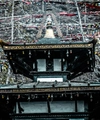
Gorakhpur Muktinath Dham
View Details..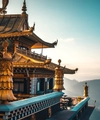
Kathmandu City Tour
View Details..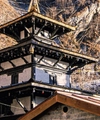
New year nepal tour
View Details..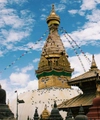
Kathmandu Valley Tour Package
View Details..
Panaromic Himalaya Mount Everest View Package
View Details..
Nepal Wild Nature Tour Package
View Details..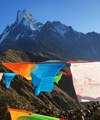
Twin Valley Tour Package
View Details..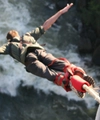
Nepal Thrilling Adventure Package
View Details..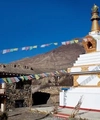
Muktinath Dham with Kailash Aerial
View Details..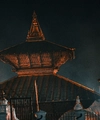
Muktinath & Pashupatinath Tour
View Details..Related Blogs
Information Links and Downloads
Talk to Kailash Yatra Expert
Submit your contact number.
Kailash Yatra Expert will call You within 1 minute.
(24X7 Free Service, India Number only)
Get All Details on Mobile


Question and Answer
Related Packages
Related Blogs

We Got Featured in the Media
Stay Connected for All Updates!
For the latest updates on Kailash Mansarovar Yatra, Adi Kailash Yatra
and other incredible travel destinations, make sure you’re following our channel



































 Home
Home Search
Search